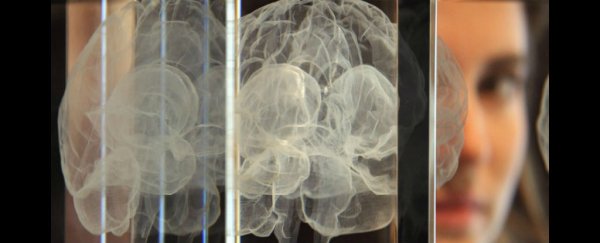A non-invasive technique that stimulates a part of the brain known to be involved in depression could have major benefits for people with the disorder, a recent study has found.
The technique involves having a person observe the activity of their own amygdala, and consciously try to increase that activity by recalling positive memories. It's called fMRI neurofeedback.
Kymberly Young, the leading author of the new study and an assistant professor of psychiatry at the University of Pittsburgh School of Medicine, says the experiment, while small, yielded promising results.
For the study, Young divided 36 adult volunteers with depression into two groups - one that did the neurofeedback on their amygdalas, and a control that did a fake neurofeedback exercise on a part of the brain not involved in emotional processing.
People in both groups had their brains scanned by an fMRI to pinpoint the location of either their amygdala or the control region of the brain.
The researchers then showed the participants a signal from the part of the brain being measured and had the participants try to regulate the strength of that signal by recalling happy moments.
After two sessions, 12 out of 19 participants who tried fMRI neurofeedback showed a significant decrease in a standard rating scale of depression after two sessions, compared with just two people in the control group.
"We're at the stage where we are showing this is effective," Young says.
One of the reasons Young and her team believe the treatment could be so successful is because of the known role that the amygdala plays in depression.
The amygdalas of depressed people tend to more responsive to negative emotional cues, like a photograph that reminds them of a frightening situation, and less responsive to positive emotional cues, like a happy childhood memory.
Young therefore aims to see whether increasing the amygdala's responsiveness to positive recollections might help reduce depressive symptoms.
But fMRI neurofeedback, she warns, should not be equated with EEG neurofeedback, a technique that involves teaching people to control their own brain waves (allegedly) using an EEG machine.
Unlike fMRI neurofeedback, EEG neurofeedback uses electrodes placed on the head to get a rough approximation of the brain's electrical activity across certain bands.
If an fMRI is Google Maps for the brain, Young says, EEG is a rough, hand-drawn street map. As a result, "we can get at deep brain structures such as the amygdala that EEG neurofeedback simply can't get to", she says.
While fMRI neurofeedback is still incredibly new, EEG neurofeedback has been around for years, and dozens of companies across the globe market it as a way to cure serious mental illnesses like depression and ADHD and boost athletic performance.
The method is backed by education secretary Betsy DeVos, who has invested in an EEG neurofeedback provider called Neurocore.
But Young is doubtful about that technique, and concerned that confusion between fMRI neurofeedback and EEG neurofeedback could end up harming some of her research.
"Nobody's really doing any controlled studies of EEG neurofeedback," says Young, "so it's likely that what they're seeing is just a placebo response."
Young's next step will be to pin down how to transfer what her team is learning from fMRI studies into a form of training or treatment that can be accessible for people who need it.
This article was originally published by Business Insider.
